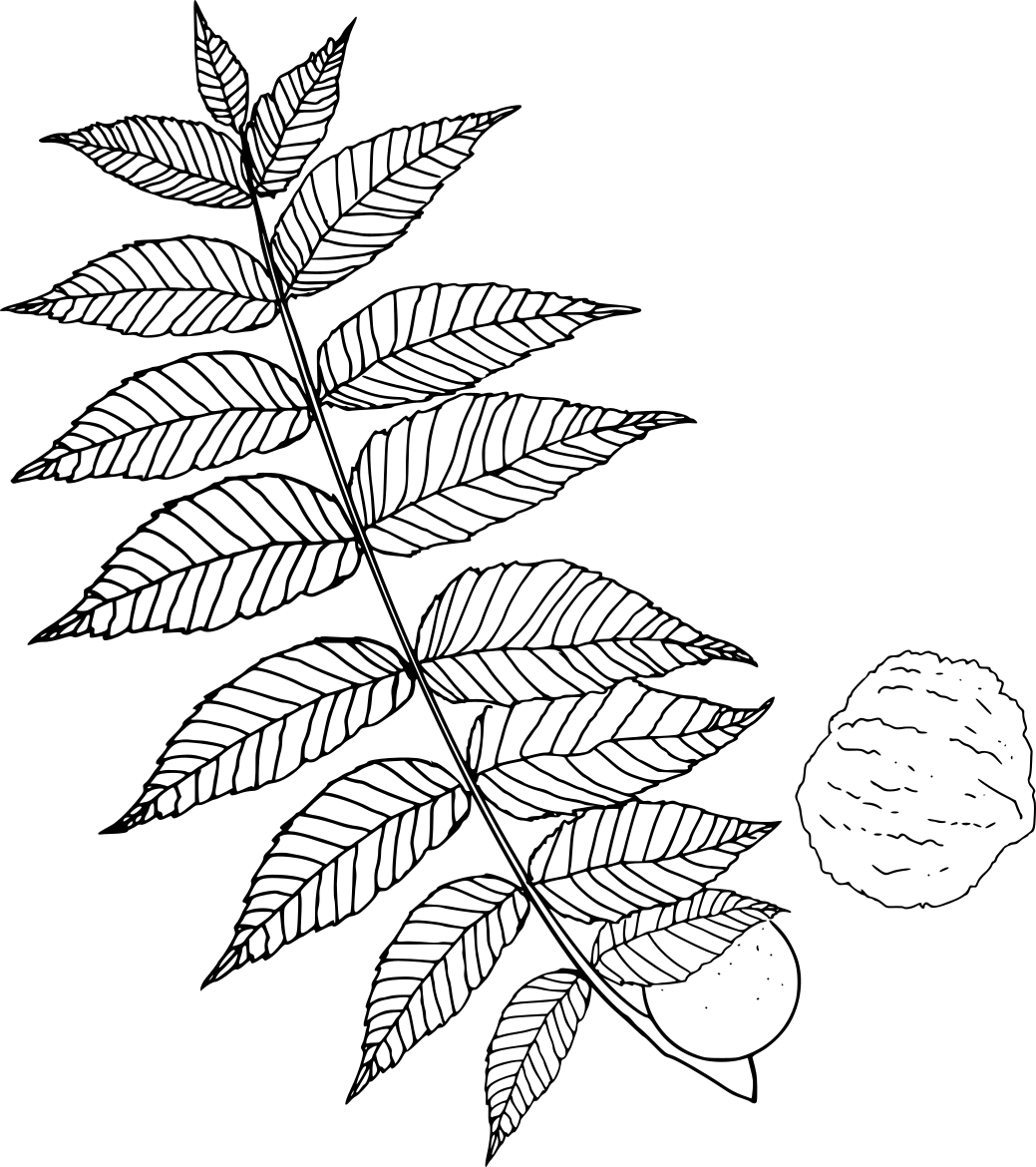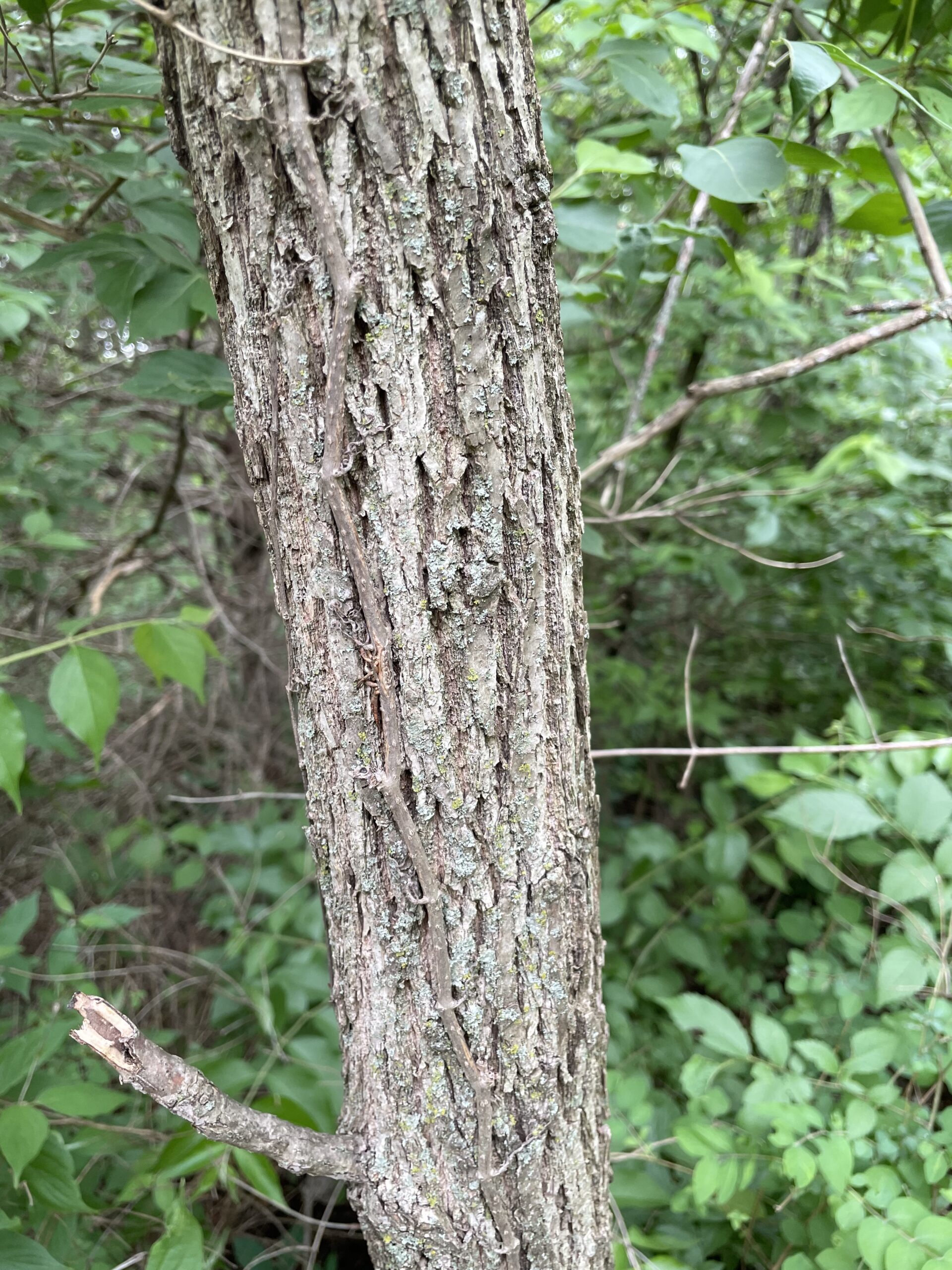Black Walnut
Juglans nigra


Black walnut leaves
His Majesties tree! Some sites have written that the Romans associated certain trees with their gods and, in this case, a species of the mighty walnut tree was linked to Jupiter, the king of the gods. The tree’s fruit, the walnut, therefore became associated with Jupiter by name. The genus for walnut trees is Juglans which originates in Roman mythology and is believed to be a combined reference to Jupiter and the prized fruit of the tree, as a treat fit for the gods.
The black walnut (Juglans nigra), a species native to North America, is Missouri’s official state tree nut. In addition to providing valuable wood, the walnut’s nutmeats are a major industry in Missouri. Even the hard shells can be used as an abrasive and to make activated carbon. There are records of old-time Ozark settlers scattering the fresh leaves of black walnut, or of its close relative, butternut, about the house to repel insects such as bedbugs and fleas. 1
It was also a tree valued by Native Americans across the country for both medicinal and building purposes. However, while the fruit of the tree is considered a food source, do not experiment with the bark, leaves or juices, for medicinal purposes because those can be poisonous.2 That said, many native groups made teas from the bark to use as a laxative and also chewed the bark to help with toothaches. A paste was made from the leaves and husk to treat ringworm, snake bites, and other skin conditions.3
The strong wood of the trees was used by Native Americans and pioneers for building materials and furniture. The large trunks of the trees was used for railroad ties and for log cabins4. It is still valued today and is used in furniture, decorative flooring, gunstocks and cabinet veneers because of its strength and its wood grain is quite attractive5.
Black walnut is slow-growing and prefers a moist, fertile, sunny site. The deep tap-root makes transplanting difficult. In addition, the nuts may become a nuisance as they litter and stain. So, you may want plenty of squirrels and deer around to help keep the area clean because they also love the walnuts. Also the size of the tree and the chemicals emitted from the large root system will impact the success of the growth and health of other plants. It is known that tomato gardens and apple trees do not survive near mature walnut trees6.
The large walnut trees can often become nature’s housing complex. For as they age, their hollow trunks and branches can house carpenter ants, snakes, bee colonies, squirrels, raccoons, opossums, owls, woodpeckers, bluebirds, chickadees, and other cavity-nesting animals7.
- Missouri Department of Conservation Field Guide – Black Walnut ↩︎
- University of Georgia- Your black walnut tree is out to get you ↩︎
- USDA Plant Guide – Black Walnut ↩︎
- Native Plant Trust – Juglans nigra – black walnut ↩︎
- https://www.wildflower.org/plants/result.php?id_plant=JUNI ↩︎
- https://www.wildflower.org/plants/result.php?id_plant=JUNI ↩︎
- Missouri Department of Conservation Field Guide – Black Walnut ↩︎

Black walnut bark
